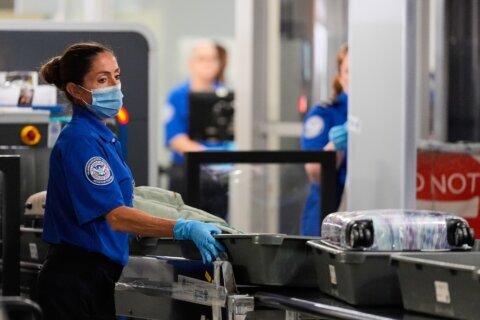Pet owners with smaller animals are being reminded to remove them from carrying cases when putting luggage through X-ray machines at airport security checkpoints.
They are living creatures and not objects, after all.
“Too many people are leaving their pet in the case when they get to the checkpoint, thus having the pet go through the X-ray unit,” said Lisa Farbstein, a spokeswoman with the Transportation Security Administration.
Officials with the TSA provided a demonstration Friday at Dulles International Airport, showing the proper way pet owners should move through security.
This video is no longer available.
The procedure calls for all smaller pets to be brought to security checkpoints in a travel carrier.
Pets are then supposed to be removed from the carrier just before the beginning of the screening process.
The carrier itself still must be put through the X-ray machine, and pet owners can then carry their dog or cat, or put them on a leash, as they walk through a metal detector.
“We would not want to expose anyone’s pet to extra X-rays,” Farbstein said. “The only people who should be X-raying your pet should be veterinarians who deem it necessary.”
Once the screening process is complete, pet owners are told to return their dog or cat to the travel carrier to ensure the safety of the pet, as well as other airline passengers.
According to Farbstein, people who leave their pets in the carrier for the X-ray are often inexperienced travelers or new pet owners.
They may also just be stressed by the experience of flying.
“Anytime people travel, it can nerve-wracking,” said Eric Chin, a TSA screening director at Dulles. “What happens is they’ll put the dog or cat up in the carrier, and they just don’t think about it.”
Putting pets through X-ray machines can be dangerous for them, exposing them to unnecessary radiation.
The machines can also be extremely stressful for pets.
The loud noises and unfamiliar surroundings can be overwhelming and cause anxiety, leading to behavioral problems, such as aggression or excessive barking, which can lead to the pet possibly being denied entry onto the flight.








